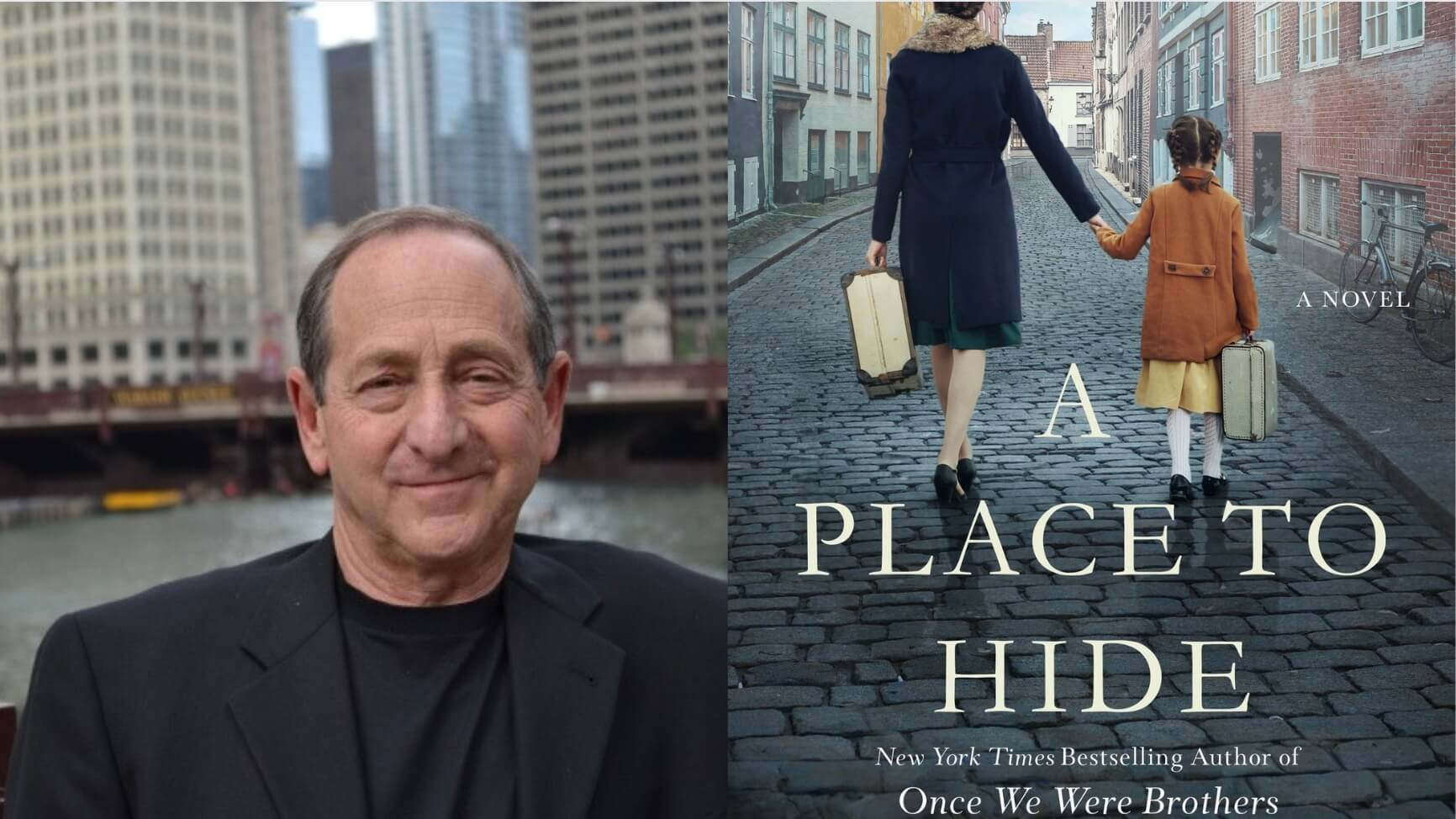The true story of a Dutch Jewish survivor inspires a tale of WWII resistance
‘A Place to Hide’ is Ronald Balson’s latest historical novel

Ronald Balson’s latest novel is ‘A Place To Hide.’ Courtesy of St. Martin’s Press
A Place to Hide
By Ronald H. Balson
St. Martin’s, 304 pages, $29
Thanks to a chance meeting in a Tel Aviv bakery, in 2002, an Israeli widow of Dutch Jewish origins ends up playing scribe to a man who served heroically in the U.S. consulate in Amsterdam during that treacherous time.
After the Nazi occupation of the Netherlands, Karyn Sachnoff escaped deportation and death by being matched to a non-Jewish family willing to adopt her. Theodore “Teddy” Hartigan, we eventually learn, helped facilitate similar adoptions. He has no specific memory of Karyn’s case. But some six decades later, can he use his contacts to find her sister, Annie, whom Karyn is convinced is still alive?
That’s the somewhat tortured premise of National Jewish Book Award-winner Ronald H. Balson’s latest historical novel, A Place to Hide. The novel supposes that, solely in return for Teddy making a few phone calls, Karyn, a journalist, is willing not only to transcribe his wartime stories, but to fashion them into a memoir.
Now 92 and living in a Maryland retirement community, Teddy has a usefully photographic recall of events, characters and even conversations from the 1930s and ’40s. The novel consists mostly of his chronological narration of the joys, frustrations and mounting dangers of those years, punctuated by occasional interjections from Karyn — and his own modest health crises. A third modern-day character is the man who brought them together, Burt Franklin, Teddy’s cousin and a potential love interest for Karyn (a plot thread that is never resolved).
There’s nothing overtly elegant or artful in Teddy’s narration, or Balson’s occasionally cliché-prone writing. At times, the book devolves into a straightforward history lesson focused on the growing bellicosity of Nazi Germany, America’s isolationism, the indefensible restrictiveness of U.S. immigration policy, the role of Amsterdam’s Jewish Council in facilitating Nazi aims, and the stirring of anti-Nazi resistance in the Netherlands.
Nevertheless, thanks in part to its studied simplicity and even more so to the story it tells, A Place to Hide is absorbing to read. It sheds light on a movement, by Dutch students and others, to rescue Jewish children — efforts that depended largely on the kindness (and courage) of strangers. The tale of a Dutch Jewish survivor who grew up in a foster family inspired Balson’s book, he says in an author’s note.
When Teddy’s narrative begins, in 1938, he is working in a basement office in Washington DC for the Western European section of the U.S. Department of State, studying embassy dispatches and foreign government position papers and clipping newspaper articles. It’s not a particularly exciting endeavor. But he’s also got a serious girlfriend, Betsy McCutcheon, and a lead role in an amateur production of the Cole Porter musical Anything Goes.
Then a promotion and transfer to the U.S. consulate in Amsterdam upends his life. Betsy, also an amateur thespian, has no intention of following him. That relationship implodes, leaving Teddy grief-stricken and romantically unattached.
His professional introduction to Amsterdam includes the realization that the consulate’s usefulness is limited, at least for the growing flood of (predominantly Jewish) refugees from Germany and elsewhere in Europe. The U.S. requirements for obtaining an immigration visa seem hopelessly bureaucratic. And the small national quotas fill quickly, leaving most aspirants consigned to an endless waiting list.
Teddy’s personal life is more promising. Through a consulate friend, Julia Powers, he meets the new love of his life, Sara Rosenbaum, a Dutch Jewish teacher who volunteers at an Amsterdam day-care center. Julia is attached, too, to Willem, general manager of the swank Majestic Hotel, owned by his family and, eventually, a mecca for Nazi soldiers.
The Germans invade in May 1940, and the U.S. consulate seems helpless in the face of the increasingly brutal Nazi occupation. But even as most of the staff are evacuated, Teddy and Julia stay on, tasked with counterintelligence — and aiding the Dutch resistance.
A Place to Hide celebrates that resistance, while not entirely ignoring the stain of Dutch collaboration, emblematized by Willem. At the Majestic Hotel, Nazis are good for business. Elsewhere in the Netherlands, too, life goes on, even as Dutch Jews are being persecuted, isolated and rounded up for deportation to concentration and death camps.
Teddy’s mission grows more dangerous after the U.S. entry into the war. But it is personal for him by now: He is committed to Sara, who becomes his wife, and to Katy, a Jewish orphan from Germany whom they have functionally adopted.
Throughout Teddy’s narration, the reader keeps wondering just how his story will intersect with Karyn’s. Will he suddenly remember her, or her sister? Will they stumble on a clue that enables the two siblings to connect?
Nothing quite so neat happens. The story turns out to be surprisingly open-ended, its ending uncertain. As a novel, A Place to Hide is unpolished and less than satisfying. But as a salute to real-life Dutch heroes — including the day-care center director Henriëtte Pimentel and Amsterdam theater director Walter Süskind, both involved in the rescue of Jewish children — it’s a useful addition to the literature.
A message from our CEO & publisher Rachel Fishman Feddersen
I hope you appreciated this article. Before you go, I’d like to ask you to please support the Forward’s award-winning, nonprofit journalism during this critical time.
We’ve set a goal to raise $260,000 by December 31. That’s an ambitious goal, but one that will give us the resources we need to invest in the high quality news, opinion, analysis and cultural coverage that isn’t available anywhere else.
If you feel inspired to make an impact, now is the time to give something back. Join us as a member at your most generous level.
— Rachel Fishman Feddersen, Publisher and CEO